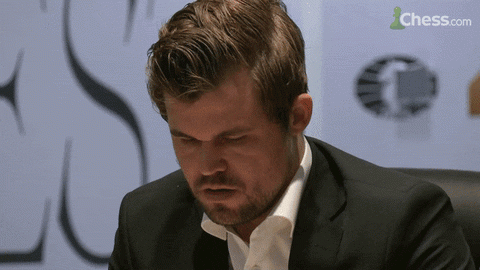
The Mystery Of "Stupid" Chess Moves
All chess players are familiar with the following situation: You are analyzing a game played by two strong players when suddenly one of them makes a move that looks completely stupid. You are trying to figure out what's going on and yet have no clue.
Finally, you ask your trusted friend, a chess engine, for help. In a split second, it spits out the answer that makes you go "wow." You also feel very excited since you just had another opportunity to appreciate the endless beauty of our favorite game. A good example is the following iconic game:
Did White just lose his mind and offer his queen for free for six moves in a row? The answer is quite obvious for more or less experienced players. But what about beginner players who just cannot figure out what's going on? A button that turns on a chess engine would help them to find all the answers and also expand their chess horizons.
But what if you turn on your chess engine only to see that a move that looks stupid is a very stupid move indeed? Here is a good example that you can find in the recent report on the FIDE Women's Grand Prix.
The last move, 44...Ke5, looks quite stupid, as Black just left her e2-knight unprotected. Yet the opponents immediately agreed to a draw. You might think that something is hidden and hope for the engine to clear the mystery. Instead, the engine just confirms that 44...Ke5 is indeed wrong and Black loses right away.
So why did former world champion GM Mariya Muzychuk agree to a draw in a completely winning position then? Or, if you want a similar mystery, go to the live transmission of the recently concluded Tata Steel Chess Masters. There you can see the following game:
Didn't GM Magnus Carlsen just commit a beginner's blunder by playing 68.Ke4? Can't Black just win with a basic skewer by 68...Qh1? And yet GM Praggnanandhaa R, well known for his tactical skills, missed this obvious opportunity and agreed to a draw. What is going on here?
Well, if you are an experienced tournament player, then the answer to this mystery should be quite easy for you. These days practically all major tournaments are played on electronic chess boards that automatically transmit the moves online. At the end of a game, players place their kings on the central squares to indicate the result. If it is a draw, White's king goes on e4 and Black's king on e5.
Unfortunately, if such a placement of a king can be treated as a legal move in the final position, then the electronic board transmits it as an actual move that was played in the game. And this little quirk sometimes creates a mystery that confounds many inexperienced chess players.
Of course, in the games above, the final stupid moves with the kings were never actually played. Naturally, in my last article, I manually removed the crazy last move.
Now imagine the situation, where an obviously terrible move was actually played in the game, as in the following example:
Judging by the final two moves of the game, the completely insane move 54.Qe7?? was indeed played in the game, but how could a legendary world champion play such a move? An engine wouldn't provide any answers here. Can you solve this chess mystery? Anyone? Bueller?
I happen to know the answer because I watched the game live, standing about two meters from the board. In mutual time trouble, GM Anatoly Karpov missed a discovered check and played an illegal move, 54. Qe6. Due to the touch-move rule, he was forced to move the queen. Ironically, if Karpov had played an even more ridiculous-looking move, 54. Qd7!, he would have been able to save the game after 54...Rxd7 55. Kg6, when Black has no winning 55...Re6+.
By the way, this is quite a common mistake. Recently one of my students sent me a game that he won from a completely lost position:
I told my student that if not for the touch move rule, he would have lost the game. My student was quite impressed that I deduced, just from the game score, that his opponent didn't see a check and played an illegal move, in this case 25.Rxc8. I explained to him that there is no magic there and I even wrote an article on this subject.
In the following game, White's stupid move didn't lose any material. It just had no purpose whatsoever unless White wanted to lose his right to castle for some reason.
Ask a computer about the weird move 8.Rg1? and it will tell you that it is a blunder, as the evaluation of the position swings from +0.4 to -1.75! So, how could a very strong GM Alexander Chernin, who was one of the tournament's co-winners, play such a horrible move? The explanation is quite simple. He played 8.O-O, but started the castle by moving his rook to f1. At that point, FIDE had only just changed the rules that made it mandatory while castling to move the king first and the rook second.
Unfortunately for White, an arbiter was watching the game and forced Chernin to make a move with his rook. GM Vereselav Eingorn, being a perfect gentleman, tried to convince the arbiter to allow his opponent to castle but all his efforts were unsuccessful. As a result, he refused to gain an advantage via such a mistake and offered a draw a couple of moves later. This is just another case of a collection of games ruined by an overzealous arbiter, which we discussed here.
I am sure that you, my dear readers, have more examples of crazy-looking moves that have a perfectly logical explanation. Please share them in the comment section!






